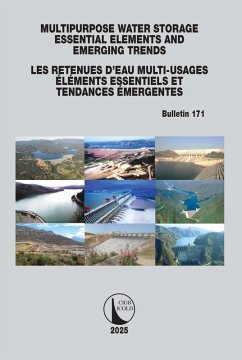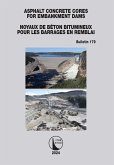The bulletin explores the economic and financial prospects of multi-purpose projects and the need for long-term planning, including reservoir conservation, as well as the challenges of forecasting long-term scenarios. It deals with the institutional and procurement aspects of infrastructure development and management, also addressing water governance and its interface with corporate governance. Drawing on case studies, the bulletin then presents structural and non-structural solutions to improve development, operation and management, and illustrates how water conservation and adaptive management are essential to obtaining the "social license to operate" reservoirs and their ancillary infrastructure. The bulletin concludes with a presentation of essential elements and emerging trends, as well as a technique for assessing the relative criticality of essential elements as they evolve throughout a reservoir's life cycle.
Le présent bulletin a pour objectif de fournir une perspective approfondie sur la dynamique des Systèmes Multiples de Production d'Eau. L'accent de ce bulletin n'est donc pas mis sur ce qui devrait être fait, mais sur ce qui est actuellement entrepris, ainsi que sur les méthodes et les acteurs impliqués. C'est pour cette raison que les conclusions et réflexions issues de l'examen des études de cas ne sont pas présentées sous forme de directives, mais sous forme d'« éléments essentiels » et de « tendances émergentes » recommandés.
Le bulletin est structuré de manière à présenter le rôle global et local du stockage d'eau dans le monde moderne et fournir les bases des développements polyvalents dans le contexte du cycle hydrologique, du lien entre l'eau et l'énergie, de l'engagement des parties prenantes et des évaluations environnementales. Le bulletin explore les perspectives économiques et financières des projets polyvalents et la nécessité d'une planification à long terme, y compris la conservation des réservoirs, ainsi que les défis de la prévision des scénarios à long terme. Il traite les aspects institutionnels et les marchés publics liés au développement et à la gestion des infrastructures, en abordant également la gouvernance de l'eau et son interface avec la gouvernance d'entreprise. S'appuyant sur des études de cas, le bulletin présente ensuite des solutions structurelles et non-structurelles afin d'améliorer le développement, l'exploitation et la gestion, et illustre comment la conservation de l'eau et la gestion adaptative sont essentielles pour obtenir le "permis social d'exploiter" les réservoirs et leurs infrastructures annexes. Le bulletin conclut par une présentation des éléments essentiels et des tendances émergentes, ainsi qu'une technique pour évaluer la criticité relative des éléments essentiels au fur et à mesure de leur évolution tout au long du cycle de vie d'un réservoir.
Dieser Download kann aus rechtlichen Gründen nur mit Rechnungsadresse in A, B, BG, CY, CZ, D, DK, EW, E, FIN, F, GR, HR, H, IRL, I, LT, L, LR, M, NL, PL, P, R, S, SLO, SK ausgeliefert werden.









